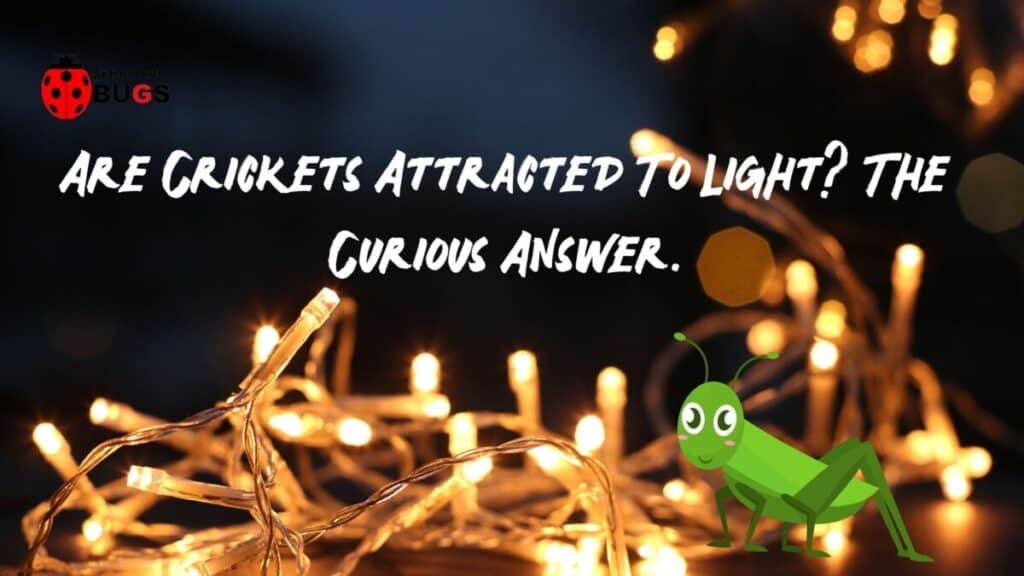
The sound of chirping crickets can be a refreshing sound on a summer’s day, but that doesn’t mean you want a swarm of them invading your home.
While these insects are happy outside during the warm sunny days, you may find that the warm glow of lights attracts them to your property on a cool, dark night.
At a basic level, this is because light can provide a source of warmth (and very often food and shelter) for crickets. But there are numerous other reasons why crickets are attracted to light.
- Crickets use the moonlight as a natural guide and may confuse artificial lights for this satellite.
- Light attracts several insects, and this large gathering is likely to catch the attention of a passing cricket.
- Some flowers reflect UV light from the sunshine, so artificial UV lights can easily be mistaken as a food source.
- Some crickets are phototactic, which means they are naturally drawn to the light.
- Not all species experience light the same way, and some crickets don’t respond to it at all.
- You can reduce how attractive your lights are to crickets by replacing UV or white lights with LED or yellow lights.
Why Are Crickets Attracted To Light?
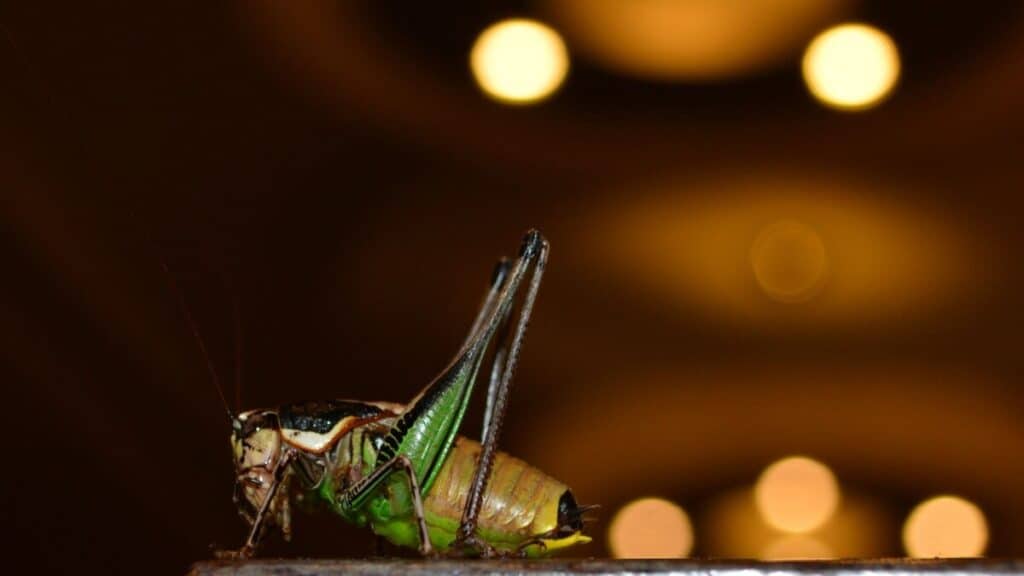
There is no conclusive scientific evidence to explain why crickets are attracted to light. But scientists have some theories about why bugs find this sensory experience so enticing.
Among the most popular theories is the idea that crickets (and other bugs) use natural light (such as the sun or moon) to guide their travel. So if they spot a light source, they may instinctively fly towards it.
Another reason why crickets may fly towards the light is in an attempt to escape predators. Think of it like this: in wild environments, light signals freedom.
If cricket can see the light in one direction, it means no predator is lurking there (it would block some of the light if it were)
And, like all creatures, crickets always try to meet their basic needs (food, warmth, and shelter). Many lights give off an adequate amount of heat, which cricket can use for warmth, and light is often accompanied by a civilization which means food and shelter are on offer. But how do crickets know this?
One popular explanation is that crickets follow other crickets and copy their behavior. Like many creatures in the animal kingdom, crickets may copy the behavior of their elders and peers, learning their ancestors’ methods and survival skills.
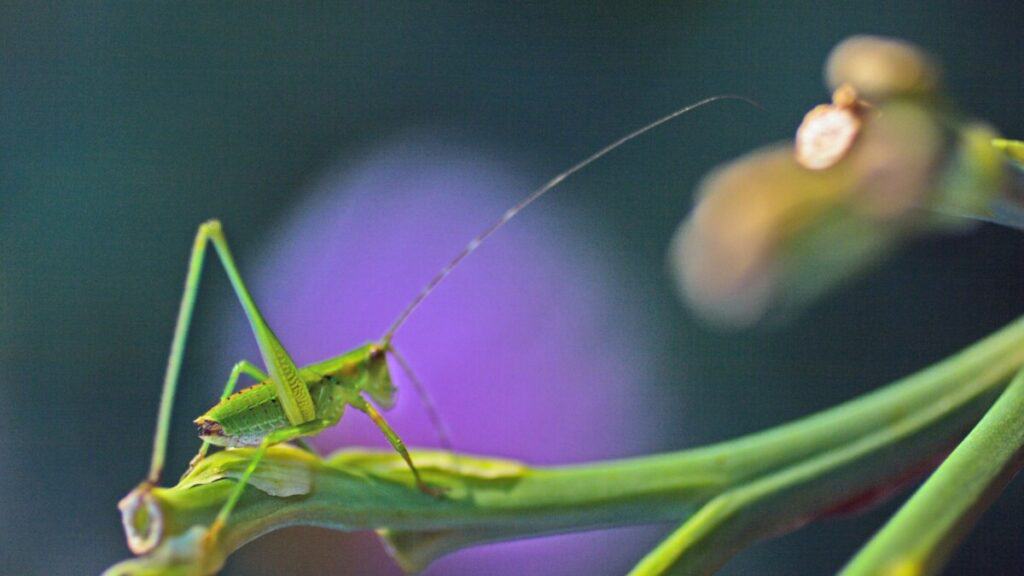
And it’s not just crickets. Imagine seeing a bunch of people or animals gathered at a particular site. You’re increasingly likely to take a look for yourself and see what all the fuss is about.
Crickets aren’t the only bugs that are attracted to the light, and these large gatherings are enough to attract the attention of many different critters.
Plus, some flowers give off low levels of UV light, meaning that a hungry cricket might occasionally mistake a lightbulb for one of these tasty treats.
Why Do Insects Keep Flying Around Lights?
Say an insect mistakes a light source for the moon or a flower. In that case, why do they keep flying around instead of acknowledging their mistake and flying away?
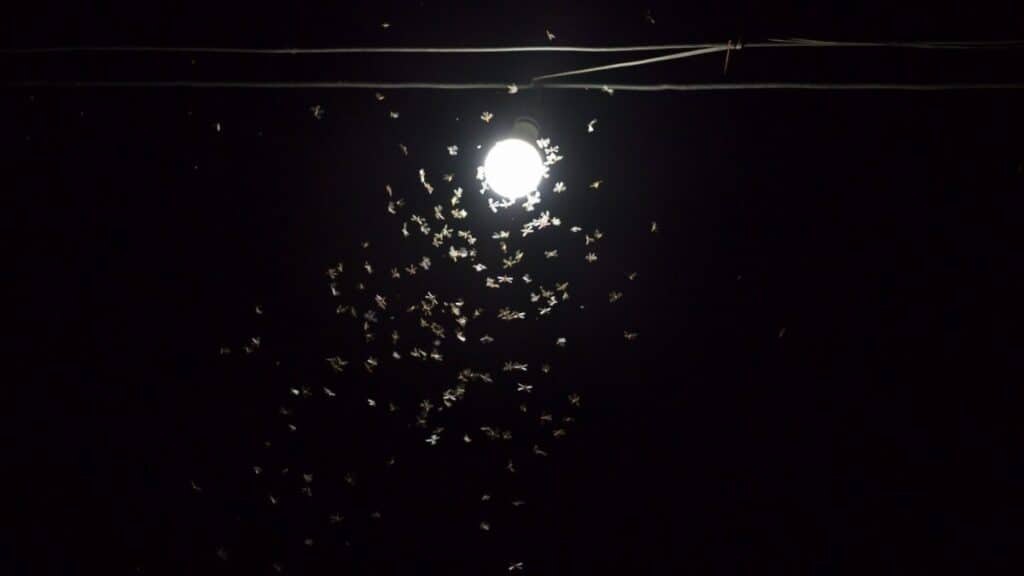
Well, like humans, insects are prone to temporary night blindness. Think about it like this: if you stand in a well-lit room, and suddenly all of the lights go out, there is a short period when you can’t see anything as your eyes adjust to the darkness.
Each species takes a varied amount of time to readjust its eye to darkness, making them reluctant to fly away from the light as they don’t want to be vulnerable to predators.
What Type Of Light Attracts Crickets?
Neon, white, and mercury vapor are the most attractive lights for crickets. If you want to minimize the chances of crickets entering your home, limit outdoor lighting and use yellow lighting instead.
Are Crickets Phototactic?
Phototaxis describes an organism’s propensity to move towards a light source. Studies on crickets and light sources suggest that they have a phototactic response.
The most popular theory to explain this behavior is that phototactic animals would use natural lights such as the sun and moon to guide them.

When we create artificial light, it’s easily confused for these natural entities by the insects, and thus they follow it out of instinct.
Other reasons animals may display phototactic behavior is that the light may provide a clear path that allows an insect to travel without bashing into anything, or they may confuse the light for some types of flower.
Are UV Lights More Attractive To Crickets Than LED Lights?
Yes, scientists have proven that UV lights attract far more insects that LED lights, regardless of the temperature settings of the latter.
Researchers in entomology have discovered many areas of interest in the relationship between light attraction and spectral composition. UV lights emit colors within this spectrum, whereas LED lacks UV waves.

It’s not just white light but other reflective objects that attract insects, such as white clothing, and this could be related to their feeding patterns.
Some flowers naturally reflect UV light, so these wavelengths provide a natural guide to lead bugs to their food sources.
If a cricket latches onto a white light or other objects, such as your clothing, it may be that they have mistaken it for food.
And this helps explain why UV light wavelengths appear more attractive to crickets than LED lights.
In addition, LED lights do not emit the same amount of heat as a UV bulb, making them a less attractive place for insects to hang out.
How Do Crickets Tell The Difference Between UV Lights And LED Lights?
UV and LED lights may look similar to us, but that’s because we can’t see UV light.
Humans can see electromagnetic light wavelengths in the spectrum of 400 to 800 nanometers (meaning that we see the colors from violet through to read).
Insects, on the other hand, can perceive electromagnetic light wavelengths in the spectrum of 300 to 650 nanometers (which includes ultraviolet light at 350 nm). These critters also prefer light from 300 nm to 420 nm.
Why Are Crickets Attracted To Light In The Winter?

During summer, crickets are happy enough to dwell in their outdoor environments eating bugs, plants, and garbage. But, once the temperature begins to drop, they may seek the warmth and comfort of an indoor environment.
Are All Crickets Attracted To Light?
There are many different types of crickets, and not all insects possess the same attraction to light. If you hear their gentle chirping inside your home, there are some species you’re more likely to find than others.
Are Field Crickets Attracted To Light?
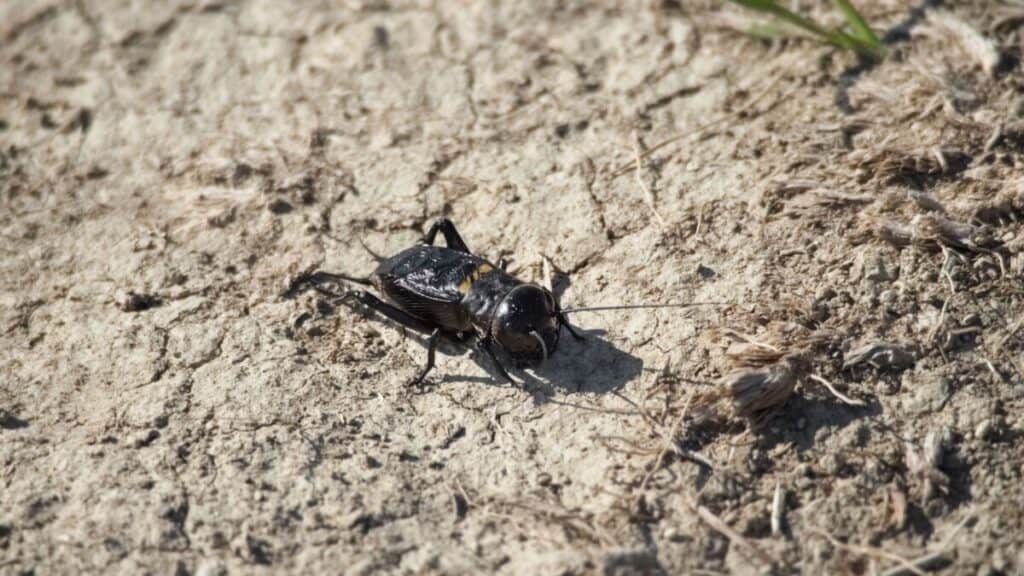
Yes, field crickets have a particularly high propensity for being drawn to lights at night. These dark bugs vary in body length from 0.5″ – to 1.25″ and are one of the most common home invaders during winter.
The light from buildings attracts them inside, where they feed on furnishings made from cotton, wool, linen, fur, and silk.
Attraction to light: High
Are House Crickets Attracted To Light?
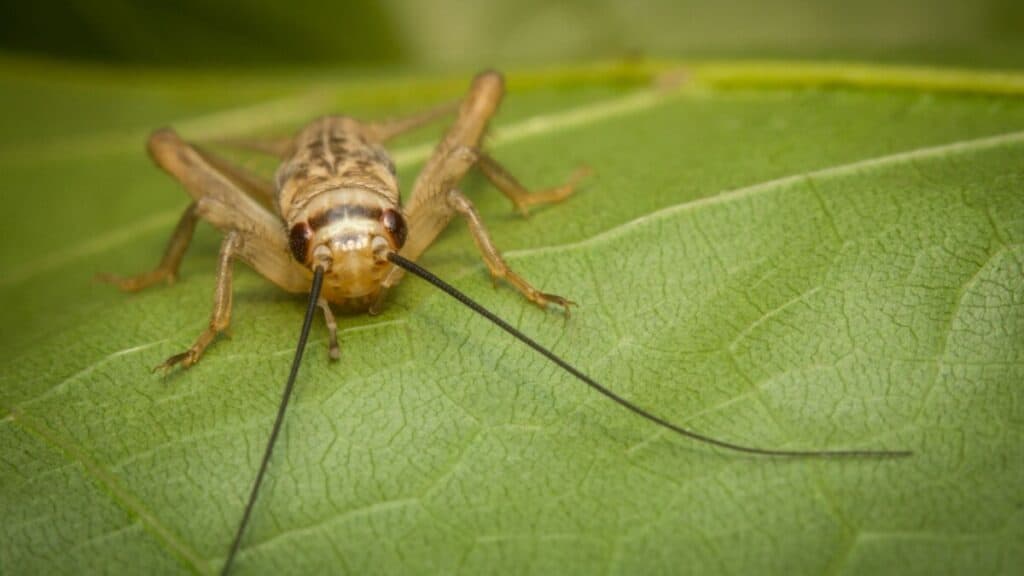
Yes, house crickets are attracted to light. As the name suggests, these yellow-brown crickets are among the most common species you’ll find inside your home.
House crickets generally like dark places, but they also enjoy the warmth, so as the temperature drops in the winter months, they’ll seek solace inside.
Attraction to light: High
Are Ground Crickets Attracted To Light?
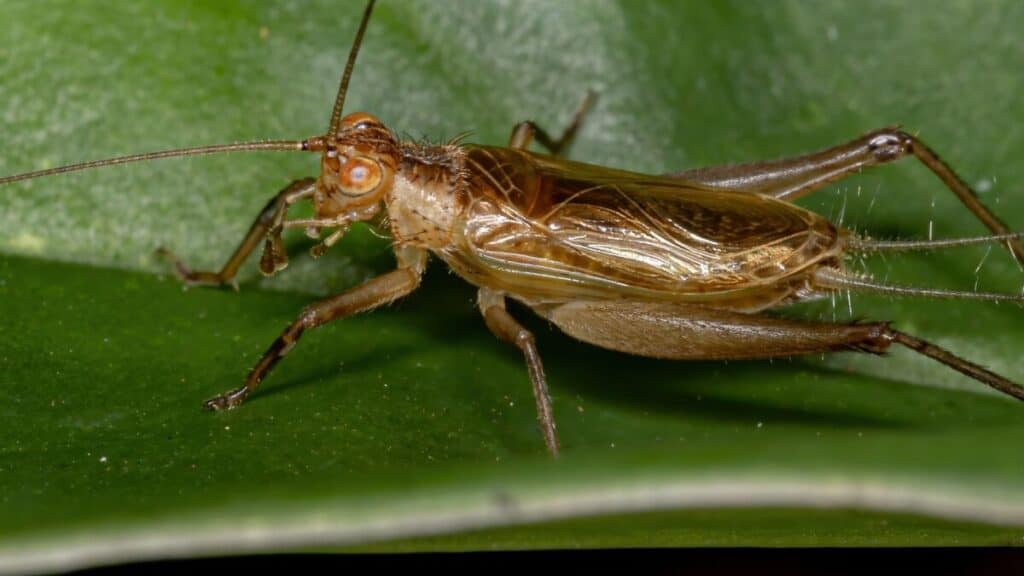
You’re much more likely to find ground crickets outside rather than inside, but during the cold days of winter, you may find that the light and warmth of your home draws them inside – sometimes on a large scale.
Attraction to light: Moderate
Are Mole Crickets Attracted To Light?
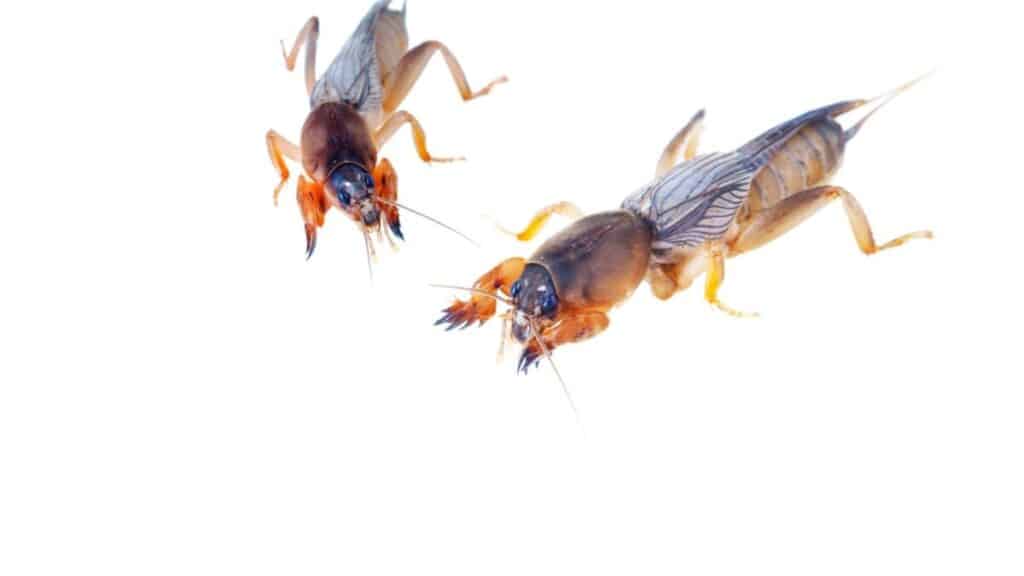
These crickets are popular in the Southeastern states of the US and possess a rather unusual appearance that many liken to that of a mole. You’ll typically find these insects underground, feeding on plant roots.
Only when their tunnels flood does these crickets surface and seeks solace indoors.
Attraction to light: Low
Are Camel Crickets Attracted To Light?
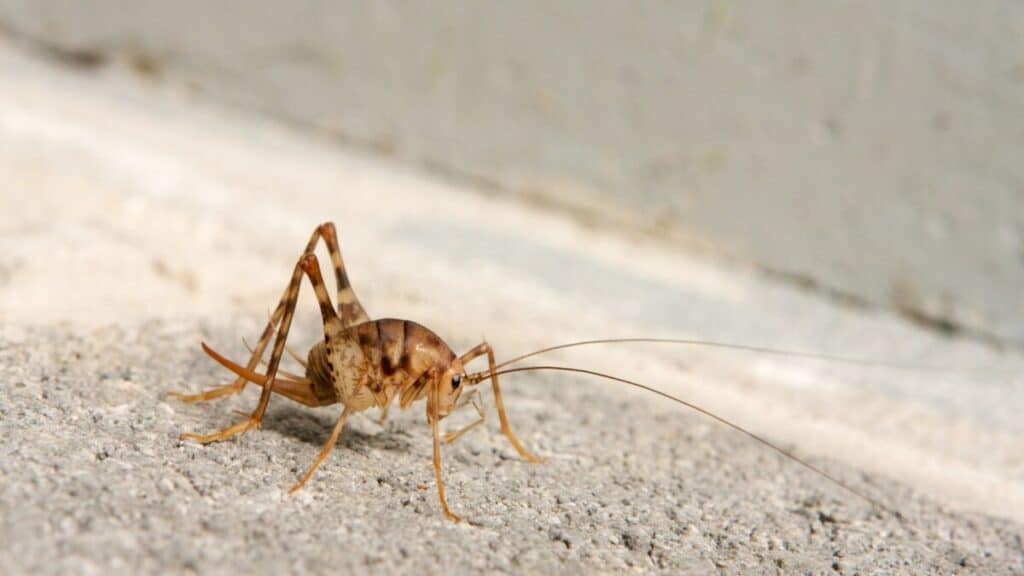
This humpback cricket prefers to spend its time in dark, cool, and damp places, hence its nickname “the cave cricket.” You can also find these critters under logs, stones, and organic matter.
During the cooler months, camel crickets may seek solace from the elements, but they’re more likely to stick to the dark, damp spaces in your home – such as basements – causing little to no damage to your property.
Attraction to light: None
Which Crickets Are Most Attracted To Light?
The crickets most attracted to light are field crickets and house crickets. Meanwhile, light is less likely to attract a mole cricket, and camel crickets have no attraction.
Why Are Crickets Attracted To My Home?

There are three primary reasons why crickets find your property attractive: light, shelter, and food. In the first instance, outdoor lighting attracts these critters to your home; once they arrive, the abundance of food around your property will entice them to stay and scavenge for more.
As they hunt outside your home, small cracks and crevices can allow them to find a way into the warm shelter of your property. The light is the initial attraction; the food and shelter are why they stay.
If crickets become trapped in your home, they will often lurk around any appliances that create heat, such as water heaters.
Once it gets dark, these critters may emerge from their hiding spaces seeking out any available light.
How Can I Make My Lighting Less Attractive To Crickets?
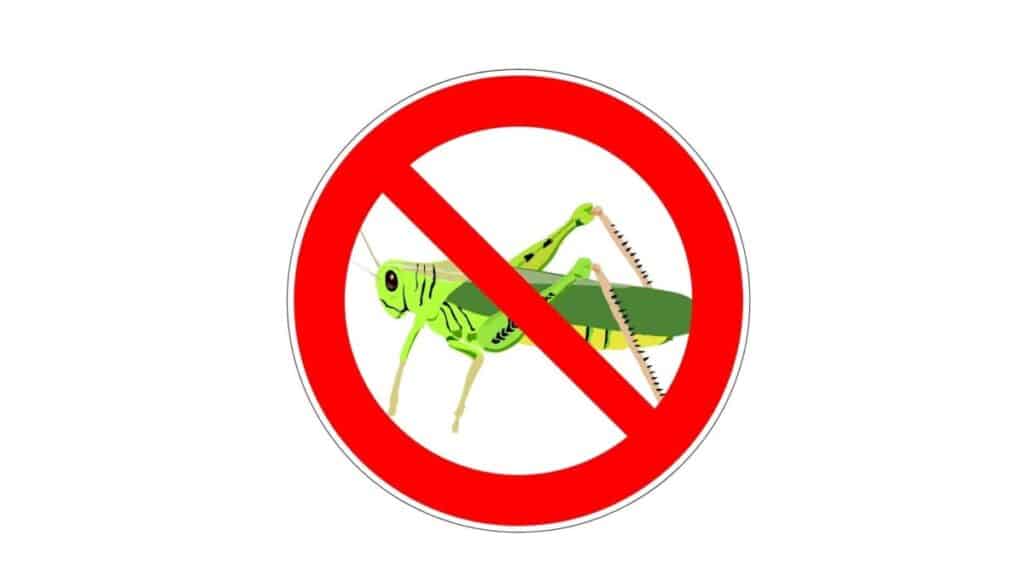
To avoid cricket infestations during the winter, you may want to rethink your lighting. Try the following tips to make your lighting less attractive to these critters:
- Minimize outdoor light and opt for motion sensors where possible.
- Remove bright lights
- Switch from white to yellow light, which is less attractive to crickets.
- Use LED lights instead of UV lights.
- Where possible, use red “bug” lights around the exterior of your home.
- Position your lights away from windows, doors, and other openings to your home. Instead, attach outdoor lighting to poles that direct the insect’s attraction away from your house.
- Turn off unnecessary lighting when not in use.
Final Thoughts.
There are several reasons why crickets are attracted to light. Though they are nocturnal creatures, they rely on the moonlight to guide them and alert them to predators. In addition, light provides these insects a source of warmth during cold nights.
Throughout the insect world, there is evidence of phototactic behavior and a preference for light on the UV spectrum.
Crickets might prefer to live in dark habitats, but there are many ways that light will entice them from their lair.
Alright, that’s it for this article, here are a few hand-selected articles that you might also find interesting reads:
Are Crickets Harmful To Plants?Cockroaches That Look Like Crickets – Easy To Miss
7 Bugs That Can Survive Extreme Cold
References
House-Invading Crickets | MU Extension (missouri.edu)
Crickets | UMN Extension
Why Are Bugs Attracted To Light? – Farmers’ Almanac (farmersalmanac.com)
Why Are Insects Attracted To Light? (forbes.com)
Recent Posts
Tiny Black Bugs in Bathroom NO WINGS: What They Are and What to Do!
Finding tiny black bugs in your bathroom can be uncomfortable, to say the least. Especially if they are persistent, or they appear in very large numbers, which they often like to do. When it...
Tiny Black Bugs in Plant Soil - What Are They & What To Do About It
A short horror story: You get a new houseplant. You do your best to take care of it. You’ve ensured that it has the right soil, the right amount of sun, it gets enough water. And then one day, you...

